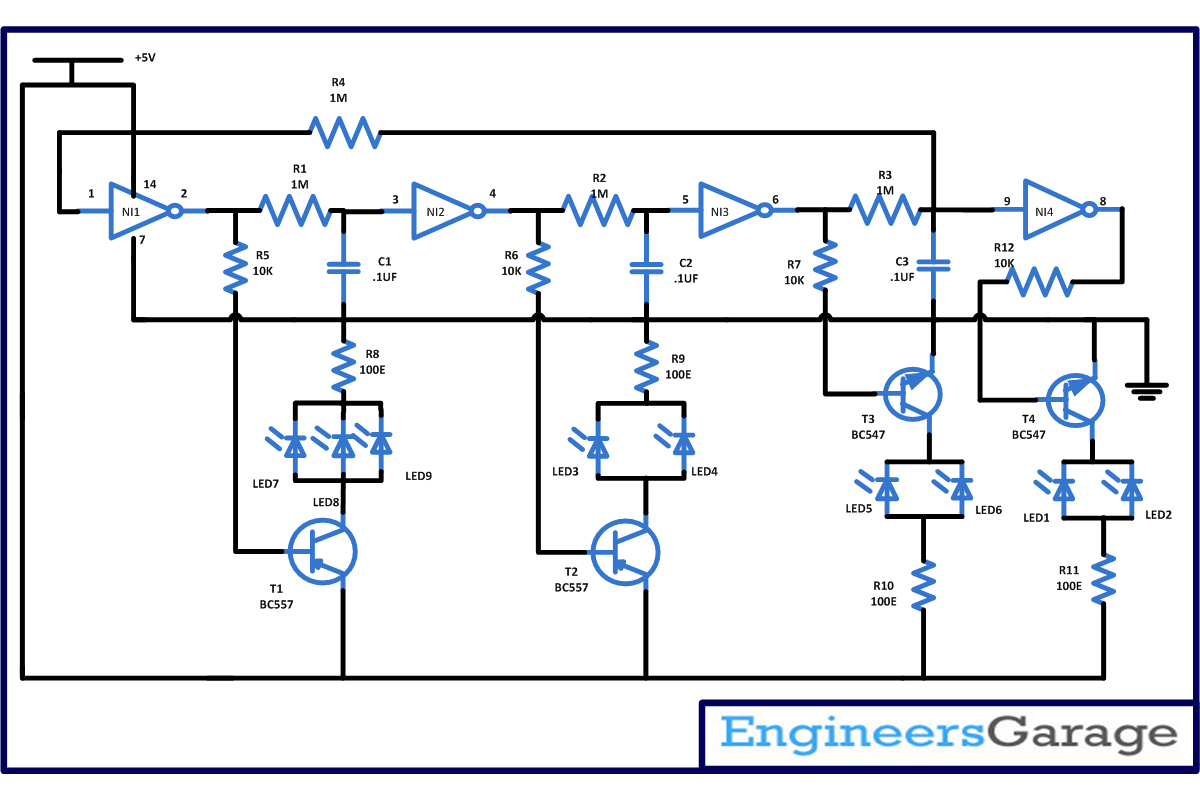Many times we find an arrow pointing direction of a shop, in movie halls giving you the indication of exit door or in malls to give you direction of staircase or wash room. But in night or in dim light it becomes quite difficult to find the way. So at such places you can install this direction pointer which will produce an eye catching appearance than any other ordinary direction pointer.
[[wysiwyg_imageupload:11098:]]
Fig. 1: Prototype of Direction Pointer Circuit on Breadboard
This simple direction pointer circuit is made with the help of an IC CD7404 with few more commonly used components. CD7404 is the most commonly used Complementary Metal Oxide Semiconductor (CMOS) chip. It comes in a 14 pin Dual Inline Package (DIP). It has small notch on one side which identifies as pin 1. It consists of 6 independent NOT gate on a single chip. Each gate has 1 inputs and 1 output. Working voltage range of IC is from 5V to 16V. It can deliver approx.10mA at 12V but this can be reduced as power supply voltage reduces.

Circuit Diagrams
Project Components
Filed Under: Electronic Projects



Questions related to this article?
👉Ask and discuss on Electro-Tech-Online.com and EDAboard.com forums.
Tell Us What You Think!!
You must be logged in to post a comment.